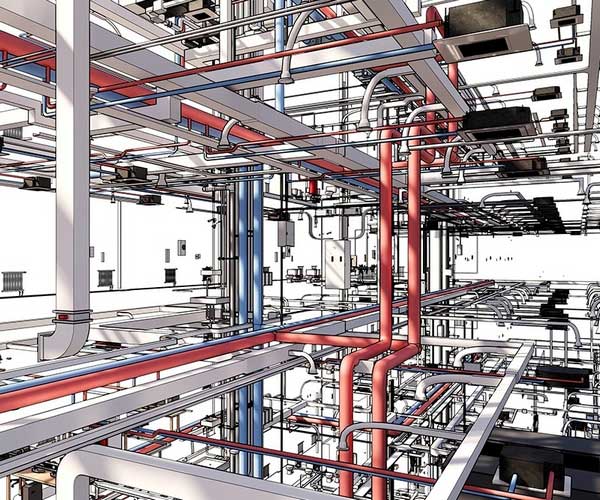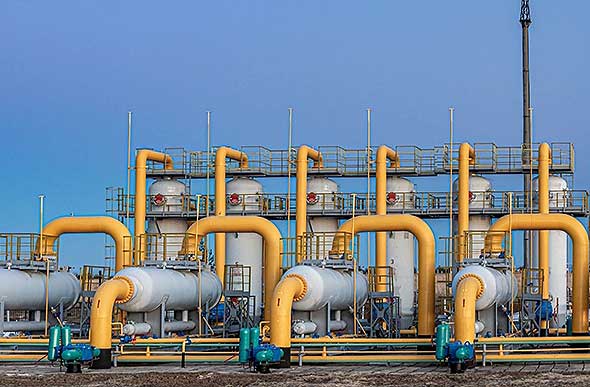Piping Design |
Piping design is a crucial part of engineering projects and process plants, involving the creation of systems that transport liquids, gases or solids from one place to another.
It also includes planning the layout, selecting materials, and determining the connections between pipes, valves, and other components.
In industry, pipe design is the specialized engineering discipline that focuses on creating efficient and safe systems for transporting various substances. It plays a key role in industries such as oil and gas, power plants and chemical processing, ensuring the seamless flow of materials while considering factors such as safety, efficiency and regulatory compliance.
What are the basic elements of piping design?
Hydraulic design (flow, velocities, pressure drop)
In piping design, it is crucial to understand the hydraulic aspects. This includes analyzing the
flow of fluids, determining velocities in pipe systems and assessing pressure drop to ensure an
efficient and effective system.
Piping Specification (materials, pipe schedule, classification of components)
Defining piping system specifications is fundamental. This includes selecting appropriate materials,
determining pipe schedules and assigning classifications to components to ensure system compatibility
with the intended application.
Insulation and thermal losses
To address energy efficiency, piping design includes considerations for insulation and thermal
losses. This helps maintain desired temperatures within the system and minimizes unnecessary energy
waste.
Piping Lists
Developing comprehensive lists of the various components and specifications within the piping system
is essential. This serves as a reference for all parties involved and streamlines design execution.
Mechanical piping design (thickness calculation) e.g. conform ASME B31.1
/ B31.3 etc.
According to industry standards, mechanical design includes calculating the thickness of piping.
This ensures that the piping system can withstand the internal and external forces it may encounter
during operation.
2D/3D Piping Routing and Modeling
Creating detailed layout plans is a vital step. Using both 2D and 3D models helps visualize the
entire piping system, ensures accurate routing and facilitates effective communication in the
design process.
Isometric Drawings for Construction
Providing clear and detailed isometric drawings is essential for construction teams. These drawings
provide a three-dimensional representation of the piping system, which helps in accurate and efficient
implementation.
Bill of Materials (Parts lists)
Developing comprehensive parts lists is necessary to keep track of required components and quantities.
This contributes to efficient procurement and construction processes.
As-Built Design
Documenting the final state of the piping system, known as As-Built Design, ensures that the built
system matches the original design intent. This documentation serves as a valuable reference for
future maintenance and modifications.
 Image..
modpacksystem.com
Image..
modpacksystem.com Analysis of flexibility
Analysis of flexibility of piping systems
A vital component is conducting flexibility analyses in accordance with industry standards mentioned
earlier. This includes assessing how piping systems respond to thermal expansion or shrinkage
to ensure that the system can accommodate these changes without causing stress-related problems.
Buried pipelines
Additional research for buried pipelines is vital in pipeline design. Understanding the impact
of soil conditions and environmental factors on buried pipe systems ensures that they remain intact
over time, preventing potential problems such as corrosion or deformation.
Support design
Determining the type and position of supports is an important aspect of piping design. Proper selection
and placement of supports are essential to maintain stability and prevent excessive movement or
stresses in the piping system.
Check of allowable loads
It is vital that loads on equipment, such as pumps or other static equipment, are within allowable
limits. This means using appropriate industry standards to assess and verify the structural integrity
of these connections.
Dynamic analysis
Dynamic analysis, which includes modal and harmonic analysis, is an essential element in the design
of piping systems. This includes evaluating the system's response to dynamic forces, such as vibration
or pulsations, to ensure that the piping can withstand these dynamic conditions without compromising
its structural integrity.
Determination of SIF
In advanced pipeline flexibility analysis, determining the Stress Intensification Factor (SIF)
is vital, especially for unique geometries not covered by standard codes. This means that specific
methodologies must be used to assess and calculate stress intensification in non-conventional
pipeline configurations.
Large diameter or rectangular ducts and pipes
Additional failure mode analysis is required when working with large diameter or rectangular ducts.
This includes evaluating the system's response to buckling under specific conditions to ensure
structural stability in these unique geometries.
Special transition sections
Special transitions between rectangular and circular sections require careful consideration in
pipe design. Analysis of stress and deformation in these transition areas ensures smooth and reliable
operation of the pipeline system.
Specialized support design
Specialized support design is an important element in advanced piping flexibility analysis. This
includes matching support structures to unique conditions, considering factors such as load distribution
and thermal expansion, to ensure the overall stability and integrity of the piping system.
Creep range design
Advanced flexibility analysis focuses on the creep range, where materials deform over time under
sustained loads. Designing for and working within the creep range ensures long-term durability
and reliability of the piping system.
Cyclic loads and fatigue analysis
Monitoring cyclic loads and performing fatigue analysis is vital in advanced pipe design. This
involves assessing how the pipe system responds to repeated loading and unloading cycles to ensure
that it can withstand these dynamic conditions without fatigue-related failures over time.
 Image..
modpacksystem.com
Image..
modpacksystem.com International Standards for piping design
ASME B31.3 – Process Piping
ASME B31.3 contains requirements for piping typically found in petroleum refineries; chemical, pharmaceutical,
hydrogen, textile, paper and pulp, power generation, semiconductor, and cryogenic plants; and related
processing plants and terminals. It covers materials and components, design, fabrication, assembly,
erection, examination, inspection, and testing of piping.
API Standard 570
API 570 refers to a particular American Petroleum Institute code, specifically a code for in-service
pipeline inspections. This code dictates standards for both the repair and modification of pipeline
systems. The code specifically includes inspection, assessment, repair and modification procedures
for applicable pipeline systems. This code applies to metal and fiberglass-reinforced plastic (FRP)
pipeline systems, as well as in-service pressure-reducing devices associated with the systems.
ISO 14692
ISO 14692 gives guidelines for the design of GRP piping systems. The requirements and recommendations
apply to layout dimensions, hydraulic design, structural design, detailing, fire endurance, spread
of fire and emissions and control of electrostatic discharge.
EN13480 Metallic industrial piping
EN 13480 specifies the design, construction and testing requirements for metal industrial piping
systems. It covers aspects such as materials, pressure design, welding procedures and non-destructive
testing, and ensures the integrity and safety of metal piping used in various industrial applications.
Reference(s)..
www.littlepeng.com
www.modpacksystem.com
www.petrosync.com
The Role of Technology in Modern Piping Design
Technology, such as 3D modeling and simulation tools, has revolutionized piping
design, allowing engineers to visualize and optimize systems before implementation.
Understanding piping design is essential, given the critical role it plays in ensuring the safety
and reliability of various treatments.
Knowledge of international standards and guidelines is essential for creating piping systems that
stand the test of time.
Following standards consistently not only ensures the structural integrity of systems, but also
protects the well-being of personnel and the environment.
Related Post(s)

Piping Engineering is a specialized discipline of Mechanical Engineering that deals with the design of piping and layout of equipment and...